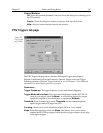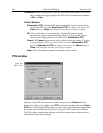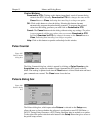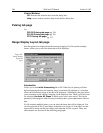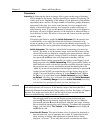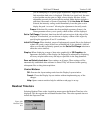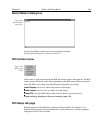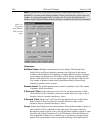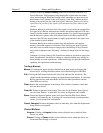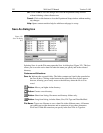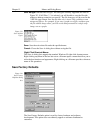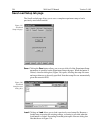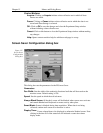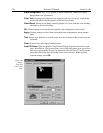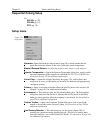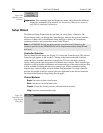
Chapter 15 Menus and Dialog Boxes 351
software if the Use Software Binning check box is checked. Otherwise, it is
done in hardware. With postprocessing binning the original data can remain
intact and unchanged. Hardware binning offers advantages in speed and noise
performance, but is limited by the well capacity of the chip’s readout register,
making it best suited for use with weak signals. Hardware binning with strong
signals may be possible if the signal is first attenuated by filters ahead of the
camera.
Hardware binning is performed before the signal is read out by the preamplifier.
For signal levels that are readout-noise limited, this method improves S/N ratio
linearly with the number of pixels grouped together. For signals large enough so
that the detector is photon shot-noise limited, and for all fiber-coupled ICCD
detectors, the S/N ratio improvement is roughly proportional to the square-root
of the number of pixels binned.
Hardware binning also reduces readout time and the burden on computer
memory, but at the expense of resolution. Since shift register pixels typically
hold only twice as much charge as image pixels, the binning of large sections
may result in saturation and “blooming” (spilling of charge back into the image
area).
Although it is always better to bin in hardware whenever possible for speed and
noise considerations, the ability to change to software binning may actually be
more suitable for some experiments. Software binning also provides additional
capability for experiment troubleshooting.
Tab Page Buttons:
Mouse:
If a rectangular region has been defined on an open image by dragging the
mouse cursor, clicking the Mouse button will install that region as the ROI.
Full:
Clicking the Full button loads the full size of the chip into the edit boxes. The
values can then be edited to match your experimental requirements. If a full chip
ROI is present along with other ROIs, the full size takes precedence and the
other ROIs are not seen.
Clear:
Deletes the selected pattern from storage. Has no effect on pattern values that
have not been stored.
Clear All:
Deletes all patterns from storage. The value for the Number Stored goes to
zero and New Pattern 1 is indicated. No values are displayed until entered.
Store:
Causes the displayed pattern values to be stored and the Edit (New) Pattern
number to increment by one. If storing will overwrite already stored parameter
values, you are queried for confirmation.
Cancel Changes:
Restores the pattern values to what they were when the Experiment
Setup window was opened.
Control Buttons:
Acquire:
Clicking on
Acquire
initiates a data-collection run in which all data
frames are stored.
Focus:
Clicking on
Focus
initiates a data-collection run in which the data is not
stored until Start Storage is selected.



